deepeye.hu
Astronomical Drawings of Peter Kiss
Astronomical Drawings of Peter Kiss





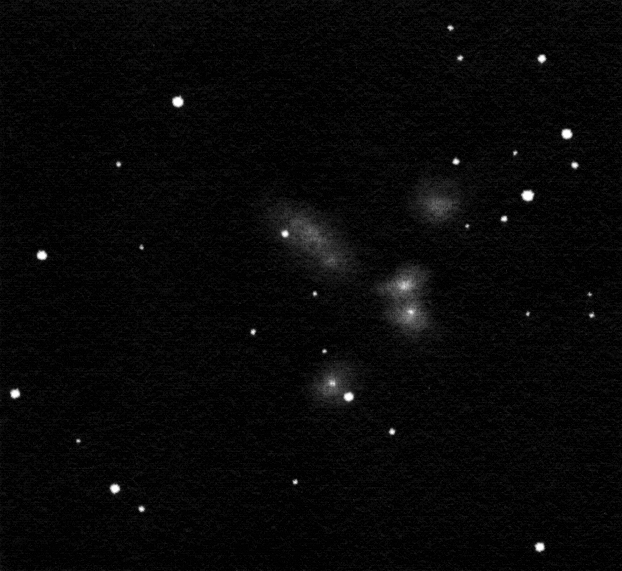
The Stephan's Quintet was the first object I saw in a large Dobsonian. This I thank to Gáspár Bakos whom I approached in the 1995 MCSE camp in Ráktanya with my wish to take a look at the Stephan's Quintet in Gábor Szitkay's 17.5" Odyssey 2. Gáspár was very kind and showed me the galaxies provided that I take a proper look at them - I was very happy to hear this condition. I was 14 at that time.
I managed to draw this famous system many years later during the 2013 Ágasvár astro-week. The five little galaxies near NGC 7331 are an obvious sight, they are around 14.0mg. But to see those few details - it's a real challange. I could see the most details in the two brightest components, NGC 7318 A and B. Their asymmetrical shapes in the drawing can be linked to the entangled spiral arms visible in the photos. I could see one foreground star and one spot on the surface of the foreground galaxy NGC 7320. The spot was probably only a foreground star as well. The core region of NGC 7319 lies a little offset form the center. There is a sixth galaxy belonging to the system, NGC 7320 C (16.7mg) which I didn't see, though I tried hard.
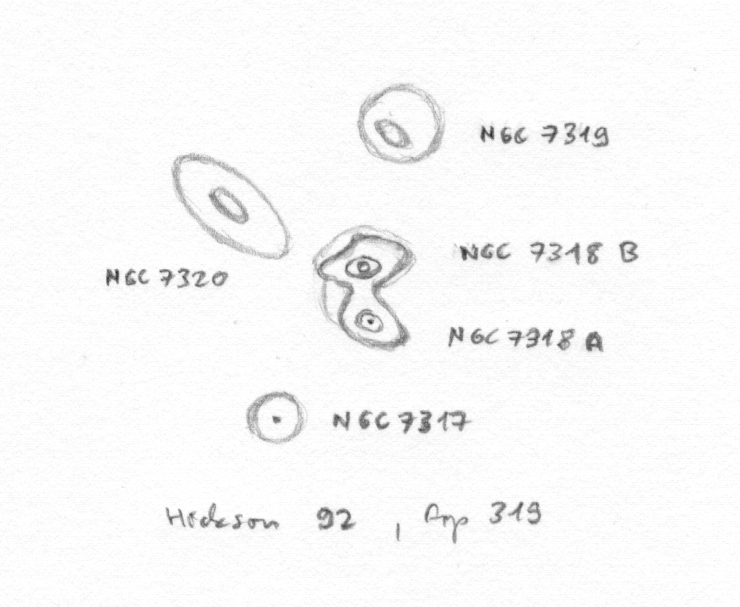
In September 2014 we took a look at the Stephan's Quintet in Jörg Peters' 24" Dobsonian at the 30. ITT held at Emberger Alm, Austria. It was a breathtaking sight. NGC 7320 was full of bright spots and the very faint galaxy NGC 7320 C was easily visible. I didn't make a drawing that time.
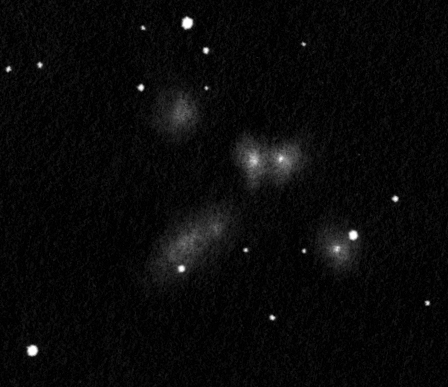
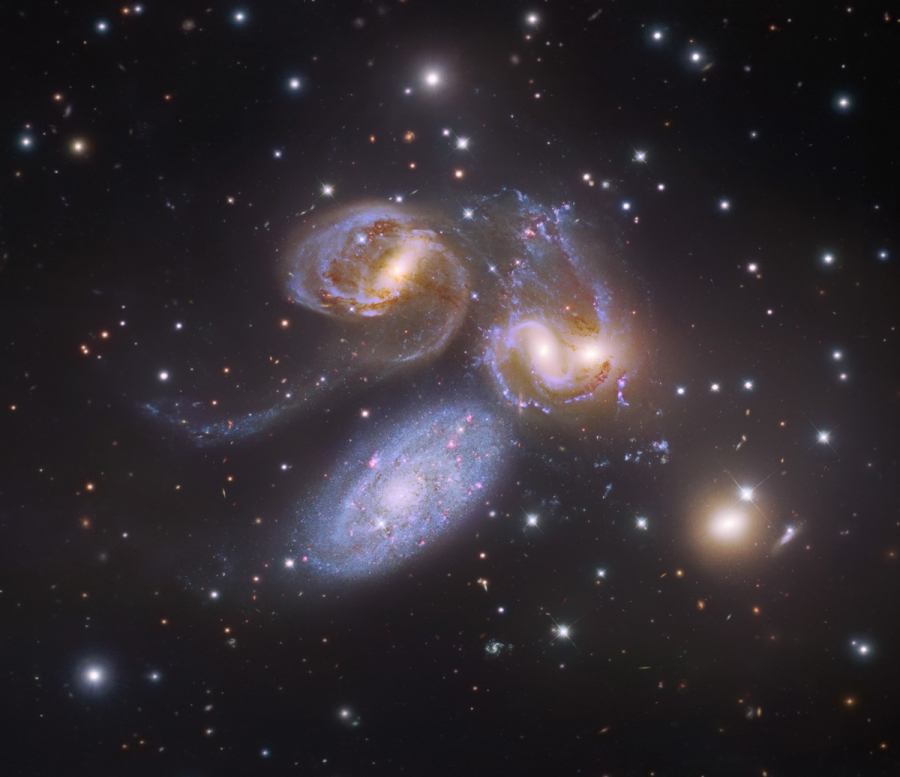
The photo on the left, courtesy of Robert Gendler was created by Robert Gendler and Judy Schmidt using Hubble Legacy Archive data (processed by Judy Schmidt), 8.2 meter Subaru Telescope (NAOJ) data and amateur data by Robert Gendler. Image assembly and processing was done by Robert Gendler and Judy Schmidt. The original photograph has been cropped and my inverted drawing rotated to show a similar area of the sky. It is worth taking a look at the original image as well because it features the faint sixth galaxy belonging to the system as well. My drawing shows a smaller area of the sky. The position of the 6th galaxy lies outside my field.
By comparing the photo and the drawing it is obvious that I wasn't even really scratching the surface. I didn't see too much of the system's beauty. The interesting details, that is the irregular, entangled spiral arms and the patches of young, hot and blue stars were invisible in the 16" Newtonian telescope.
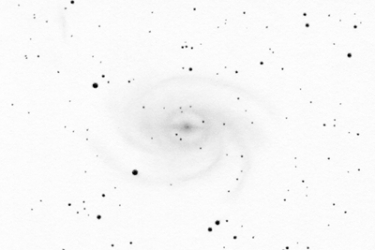
Pavo galaxy
The grand spiral galasy of Pavo
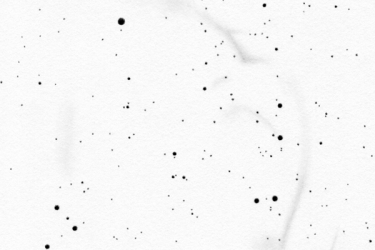
Panorama drawing
Huge and faint supernova remnant in the southern sky
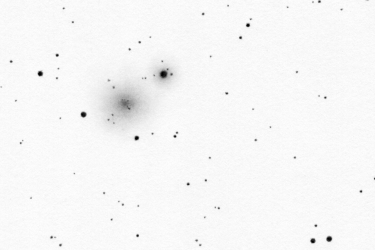
Centaurus globular cluster
The second globular in Centaurus

Apus globular cluster
Globular cluster close to the Southern celestial pole
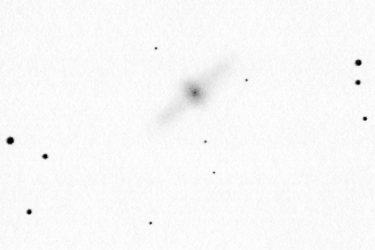
Centaurus galaxy
Polar ring galaxy
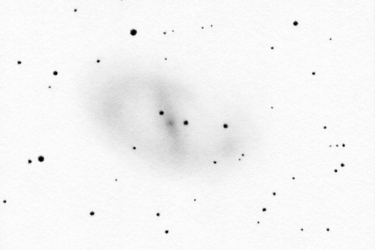
Ara galaxy
Barred spiral galaxy in the thick of the Milky Way